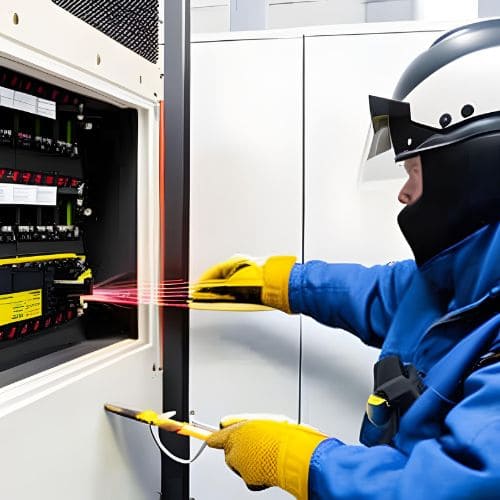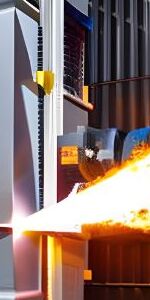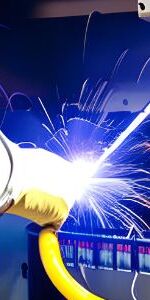The Significance of Arc Flash Hazard Analysis and Mitigation Techniques
Electrical arcs can emerge when a gas is subjected to a voltage greater than its capacity to block. An arc occurs when the voltage between conductors is sufficient to ionize the air between them. When ions are added to air, the air becomes an excellent electrical conductor. Ionization of air generates a current that warms and illuminates the air. This heat forces the ionized air to ascend, producing an arch-shaped stream. Consequently, this phenomenon is known as an arch current. An arc flash generates temperatures of up to 20,000 degrees Celsius.
Arc flash dangers endanger both humans and property. Among the benefits of arc in flash for businesses are the following:
- Direct expenses consist of medical treatment, rehabilitation, worker compensation, investigation costs, and lost production.
- Indirect costs consist of legal and judgement expenses, litigation expenses, penalties, insurance premiums, repair fees, and the cost of employing a replacement worker.
- When unwanted occurrences occur, they can harm your reputation, make it more difficult to get work, and even result in criminal charges.
- Most consumers will not patronize businesses with a high accident rate, resulting in lost revenue and even the cancellation of an electrical license.
- Accidents involving the utilization of an electrical circuit Flash create an impression, which might result in missed opportunities and squandered funds.
Table of Contents

Where Do the Threats of Arc Flash Originate?
- Applying the test probe to the incorrect surface
- Unsuitable apparatus, installation, and work procedures
- Utilizing lesser electrical components
- Insulation degradation or equipment gaps
- Discord with disconnect panel
- Dust on electrical equipment or corrosion
- Lack of proper upkeep of circuit breakers and switches
- Exposition of essential organs to the environment or frayed connections
- Wires conveying high voltage or a constant supply of electricity
- Dampness in electrical equipment

Methods for Lowering the Danger of an Arc Flash:
Turning off electrical components:
It minimizes potential risks as much as possible. Work should not be performed on electrified equipment, and testing the equipment after it has been de-energized or re-energized requires extreme caution. Utilizing remote tracking prevents circuit breakers from being too close to arc flash boundaries, which might risk the safety of the worker operating them.
Utilize less hazardous technologies:
To examine the dangers associated with short circuits and the interplay of protective devices, an arc flash analysis and power system study are undertaken. Protect people and property using low-threat options, such as remote rack equipment.
To substitute electrical and control systems:
Check that the required degree of PPE (personal protection equipment) is available based on the strength of the arc flash. Changes are being made to engineering procedures and technologies to make them safer. Circuit breakers and energy distribution systems are designed to limit the energy flow.



Reduce the available fault current:
By adopting non-current limiting breakers, companies will be able to restrict the amount of fault current accessible. These items can be utilized during maintenance with an open tie. Opening the connection between twin power supply during maintenance decreases arc flash dangers by decreasing available fault current. Current-limiting reactors can be used to stop the flow of electricity during arc faults.
Alter the force of the blast:
Encourage the use of arc-resistant materials. Arc-resistant switchgear directs the energy and heat generated by arc flashes to an unoccupied region through ducts. This is attained by the use of sealed joints, pressure relief vents on the top, and stronger hinges.
CareLabs provides a comprehensive selection of arc flash investigation and analysis services. Experts evaluate arc flash threats to ensure your safety program is up-to-date. CareLabs can identify and mitigate any arc flash threats utilizing innovative technologies. In CareLabs, ETAP (Electrical Transient Analysis Program) software is utilized for research and analysis. To ensure that our professionals are available in case of an emergency or for routine activities, CareLabs employs staff in numerous places. With a strong reputation and a sizable customer base, CareLabs has quickly established itself as an ISO 9001:2008-accredited company. In all major Japanese cities, including Tokyo, Yokohama, Osaka, Kyoto, and Crete, CareLabs provides arc flash testing and analysis.
RELATED NEWS












Coordination



RELATED NEWS





















